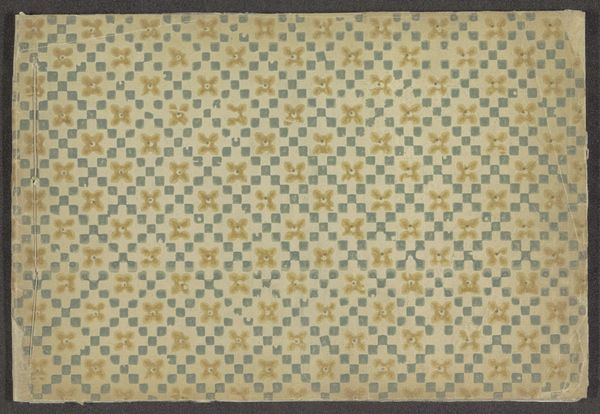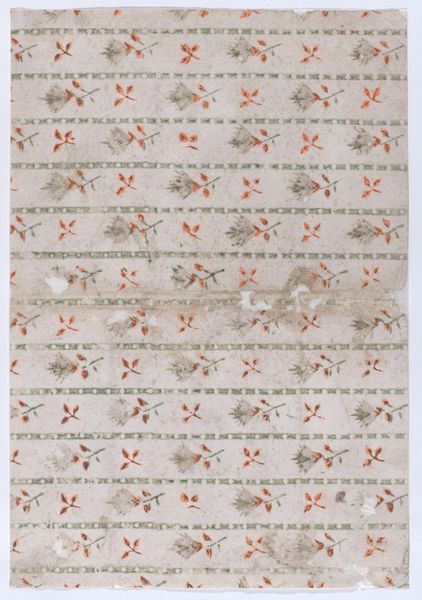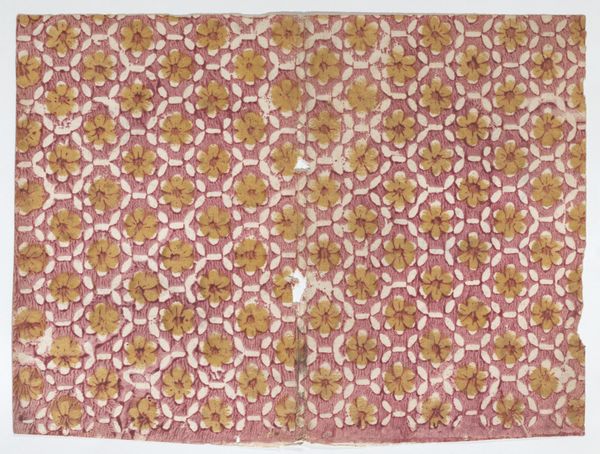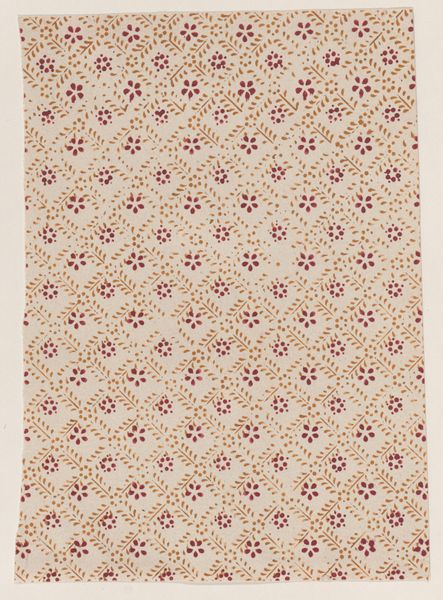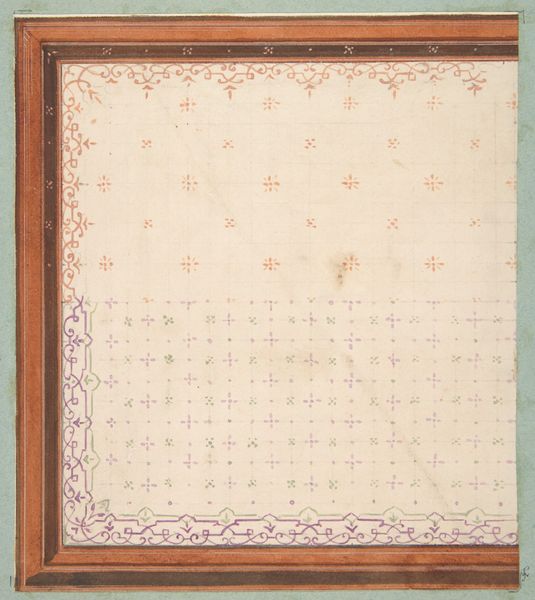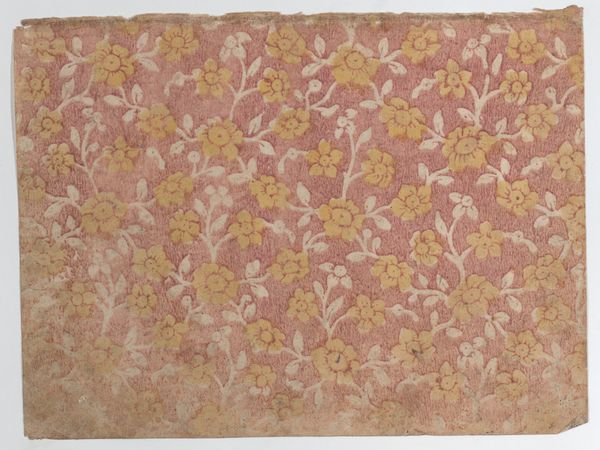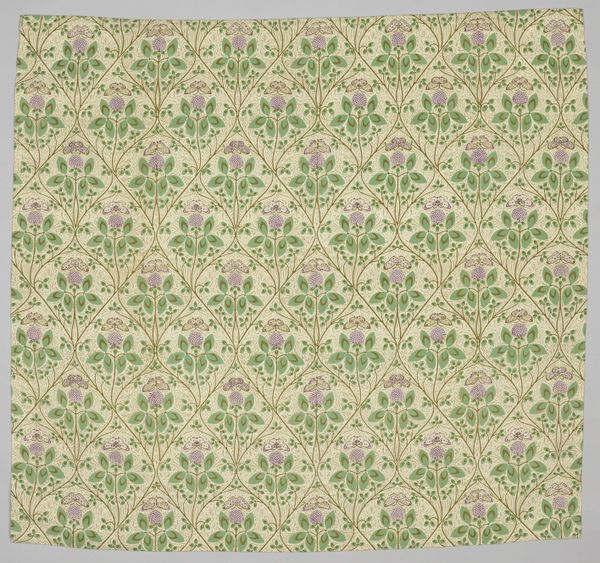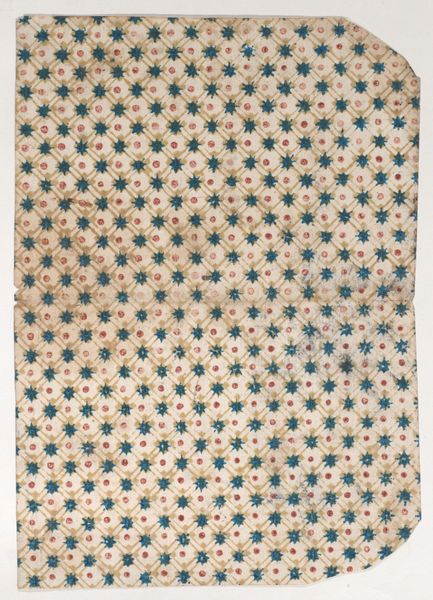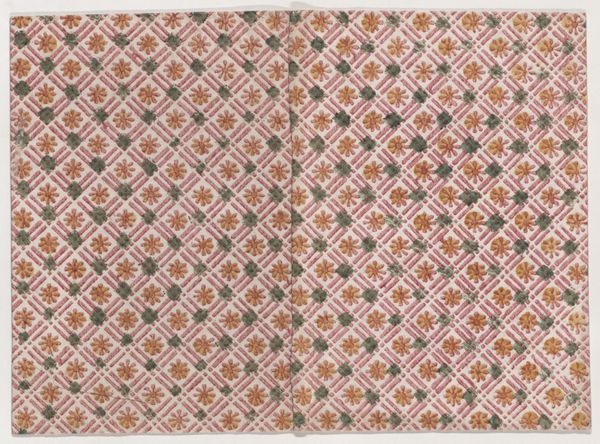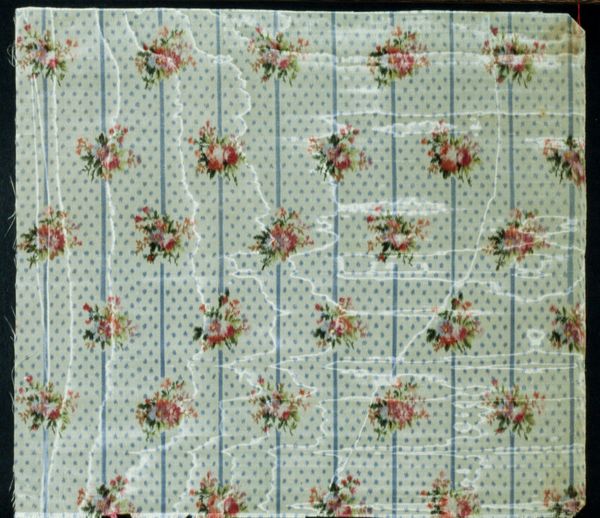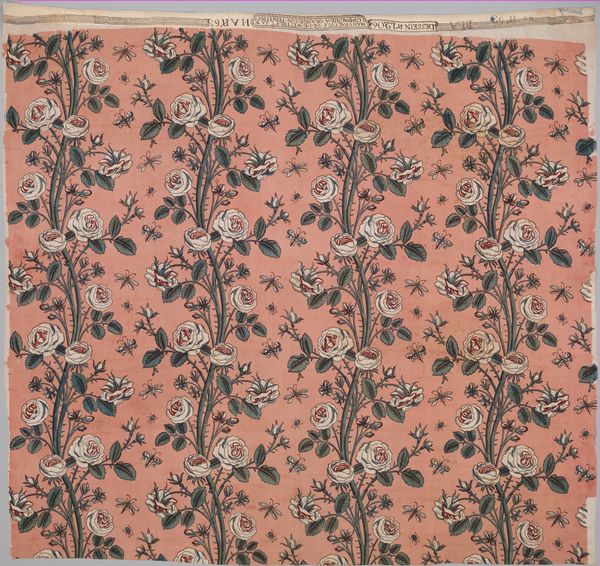
textile
#
folk-art
#
textile
#
folk-art
#
organic pattern
Dimensions: 91 x 81 1/2 in. (231.14 x 207.01 cm)
Copyright: Public Domain
Curator: Here we have a quilt top dating from around 1825. It is currently held here at the Minneapolis Institute of Art. Editor: It feels surprisingly delicate, like a whispered secret. The patterns are so repetitive but the faded pastels give it a soft, dreamlike quality. Curator: Indeed. Consider the laborious process: weaving and dyeing the textiles, piecing together this intricate design. It's a material testament to domestic industry, largely women’s work during that period. This represents not just functional craft, but also artistic expression deeply intertwined with social roles and available resources. Editor: And that’s precisely why its status has long been debated! High art versus craft. The textiles speak of intimacy and utility, created for comfort, but undeniably beautiful. There’s a real dialogue happening between function and form. The use of repeated floral and geometric patterns evokes a sense of the handmade and everyday—pushing back against ideas around fine art elitism. Curator: Absolutely. It reflects a complex intersectionality of identity: gendered labor, societal expectations, resourcefulness, all brought to bear on one piece of cloth. Understanding its placement in this lineage highlights the stories often silenced or dismissed in art historical narratives. Editor: It also brings to light the skill and care inherent in making something beautiful and practical from modest means, and how creativity has long thrived under constraints. There is something incredibly powerful in recognizing that everyday creation can also have profound emotional and historical resonance. It really transcends just 'decoration', wouldn’t you say? Curator: I certainly agree. Thinking about it further, the "organic" elements you mentioned point towards the very grounding in lived experiences. Editor: Right. The work required to bring these material resources together shouldn’t be dismissed either. Curator: A great piece. It leaves one with an enduring perspective on domestic labor. Editor: I have to concur. It leaves one seeing artistry in the everyday.
Comments
minneapolisinstituteofart almost 2 years ago
⋮
Quilts in 19th century American homes were often as important for their aesthetic value as their utilitarian use. The tops for the majority of these attractive bed coverings were either made of carefully pieced fabrics to form a decorative pattern or embroidered with an appliqué design. These techniques were particularly time-consuming and labor-intensive endeavors. Time constraints undoubtedly inspired some women to seek faster alternatives to create decorative quilt tops. Extant examples and historical references indicate that during the second quarter of the 19th century a number of hand-stenciled tops were made by women in a domestic environment. This quilt top, with its block printed pattern, is a bit of a mystery as there appear to be no other examples in museum collections and there are no references to production of printed textiles made in a home setting. As considerable research is currently being done in the field of American quilt studies, it is hoped that one day we will know more about the circumstances related to the creation of this charming quilt top.
Join the conversation
Join millions of artists and users on Artera today and experience the ultimate creative platform.

